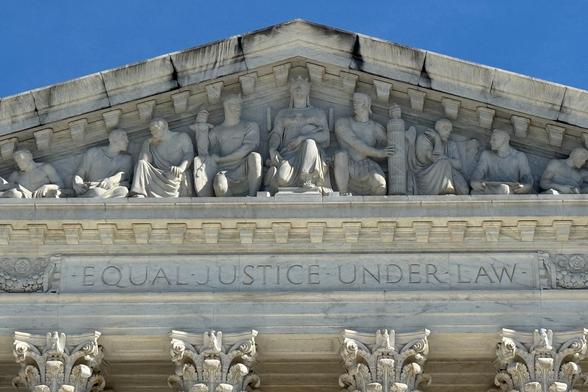A HUGE Toronto Raptors Trade For Kevin Durant Could Be Coming Soon https://www.rawchili.com/4310904/ #barrett #basketball #durant #DurantBarnes #DurantRaptors #KevinDurant #KevinDurantTrade #NBA #Raptors #RaptorsRumors #RJBarrett #Toronto #TorontoRaptors #TorontoRaptors
#Barrett
https://www.lovenba.com/1593659/ A HUGE Toronto Raptors Trade For Kevin Durant Could Be Coming Soon #AtlanticDivision #Barrett #durant #DurantBarnes #DurantRaptors #EasternConference #KevinDurant #KevinDurantTrade #Raptors #RaptorsRumors #RjBarrett #Toronto #TorontoRaptors
Mizzou Basketball Player Review: T.O. Barrett https://www.rawchili.com/nba/67899/ #barrett #Basketball #CollegeBasketball #ExcludeFromStnVideo #FrontPage #m #MissouriTigersBasketball #mizzou #MizzouBasketballAnalysis #nation #ncaa #NCAABasketball #ncaab #o #player #review #rock #t
Amy Coney Barrett’s dissent in a recent Supreme Court ruling is turning heads. Aligning with liberal justices, she advocates for Venezuelan migrants' due process against deportation linked to gang activity. Meanwhile, Trump highlights his health with a physical exam announcement amid his election campaign, and Robert F. Kennedy Jr. questions fluoride safety. This article dives deep into the political landscape, revealing tensions and scandals leading to the upcoming elections. For more details, visit: [SCOTUSBlog](https://www.scotusblog.com/2025/04/supreme-court-requires-noncitizens-to-challenge-detention-and-removal-in-texas/) #SupremeCourt #Immigration #Election2024 #PoliticalNews #Barrett #Trump
Veteran legal conservatives rush to Justice #Barrett’s defense amid MAGA backlash
https://www.cnn.com/2025/03/07/politics/amy-coney-barrett-maga-backlash/index.html
Prominent legal conservatives on Friday sought to tamp down a wave of sudden criticism directed at Supreme Court Justice Amy Coney Barrett over her vote to reject President Donald #Trump’s attempt to freeze nearly $2 billion in foreign aid.
https://www.youtube.com/watch?v=SIznjdfTA44
Sean #Barrett and Alana #Beck are under #Surveillance in #Washington state as they hit technology outlets.
https://scitechdaily.com/what-happens-to-your-brain-when-you-know-youre-being-watched/
New leaks make clear that Justices #Jackson, #Kagan, and #Sotomayor wanted the #SCOTUS #CodeOfEthics to be enforceable. #Alito, #Gorsuch, #Roberts, and #Thomas did not.
https://www.nytimes.com/2024/12/03/us/supreme-court-ethics-rules.html
The article is silent on #Kavanaugh and didn't identify the position of #Barrett.
Black state lawmakers in Michigan have called on the state’s attorney general and a county prosecutor to investigate #Tom #Barrett,
a GOP candidate for the US House, over a newspaper advertisement in a Black-owned newspaper that listed the wrong date for Election Day.
The complaint from the Michigan Legislative Black Caucus alleges that
the Barrett campaign potentially violated state law with the printing of an ad in the Michigan Bulletin, a Black-owned publication serving Lansing,
that tells voters to vote on November 6, when Election Day is on November 5
https://www.cnn.com/2024/10/14/politics/michigan-tom-barrett-election-ad/index.html
They also used the network to line their own pockets.
Over the next few years, their personal wealth would skyrocket as they skimmed off tens of millions of dollars in advisory fees.
These pools of dark money were also used to boost various initiatives directly or indirectly that were associated with Opus Dei:
the Catholic Association,
the Catholic Association Foundation,
Catholic Voices USA,
and the Catholic Information Center on K Street,
where Leo now sat on the board,
all became beneficiaries of this largesse.
During the Donald Trump years,
conservatives
— led by Leonard Leo
— took control of the Supreme Court.
Following the appointment of Neil Gorsuch to replace Antonin Scalia,
two more seats had become vacant during Trump’s presidency,
allowing him to create a solid conservative majority.
One of those seats had become vacant just weeks before the election,
following the unexpected death of Ruth Bader Ginsburg.
Leonard Leo was once again asked to help find a replacement.
At one Federalist Society event, his good friend Supreme Court Justice Clarence Thomas jokingly referred to Leo as the third most powerful man in the world,
presumably behind the pope and the president of the United States.
“God help us!” Leo had responded.
But following Ginsburg’s death, not even God could rein in his ambition.
Rather than offer a concession candidate, given the proximity of the election,
Leo put forward #Amy #Coney #Barrett, a protégé of Antonin Scalia who was openly hostile to Roe v. Wade.
It was no coincidence.
A few months earlier, Thomas E. Dobbs, the Mississippi health officer, had lodged an appeal at the Supreme Court after the Jackson Women’s Health Organization
— Mississippi’s only abortion clinic
— had successfully challenged a state law that banned abortions after fifteen weeks.
An injunction against the state’s enforcing the law had already been upheld by two separate courts,
but a Dobbs win at the Supreme Court directly challenged the premise of Roe v. Wade
and created the opportunity the Catholic right had craved for so long
to overturn almost fifty years of abortion rights.
Coney Barrett was confirmed on the Supreme Court just eight days before the election,
critically giving the court a strong
anti-abortion bias as the case was being considered.
#Leonard #Leo, the conservative activist with an estimated
💥 $1 billion at his disposal,
is threatening to withhold money from the dozens of groups he supports 👉 unless they develop plans to "weaponize" their ideas.
Why it matters:
Leo's call for conservative groups to get #more #aggressive will send shockwaves through the right-wing ecosystem he helped create.
Leo wants less conversation and more action
— fewer seminars and more campaigns
— as part of a plan to
♦️"crush liberal dominance at the choke points of influence and power in our society,"
he told the groups in a letter obtained by Axios.
The goal should be to direct "funding🔸 to operationalize or weaponize the conservative vision," Leo wrote.
Zoom in:
Leo, 59, is telling organizations backed by his #85Fund that he's undertaking a
"comprehensive review" of his grant-making process.
His letter doesn't mention any specific groups by name, but they know who they are.
Groups such as Teneo,
Honest Elections Project,
Consumers's Research and
Do No Harm
are examples of organizations that have adopted
the kind of #aggressive #tactics Leo encourages, according to a source close to the 85 Fund.
Those groups have run campaigns that have achieved measurable results, such as
Consumers' Research's work on ESG investing,
which has been featured in congressional hearings.
Decisions about future funding will be shared with the groups by the end of November, Leo's letter said.
Zoom out:
Leo helped build the #Federalist #Society, an organization for conservative law students,
into an incubator for lawyers and judges that reshape the federal judiciary and American society.
He helped former President Trump select three conservative jurists for the Supreme Court
— Neil #Gorsuch, Brett #Kavanaugh and Amy Coney #Barrett.
They've transformed federal law on issues ranging from #abortion #rights (overturning Roe v. Wade) to #federal #rule-#making.
In 2022, the New York Times revealedhow a nonprofit Leo controls,
the #Marble #Freedom #Trust, received a ⭐️$1.6 billion contribution from a conservative donor, #Barre #Seid,
who gifted the shares of the company he founded before they were sold.
Leo has an estimated
⭐️$1 billion left to spend,
according to the Financial Times.
Leo, who is credited with the initial $1.6 billion windfall to Marble Freedom Trust, has been responsible for raising donations and support for the 85 Fund.
Between the lines:
Behind Leo's new push is his admiration for what he views as successes of progressive nonprofit groups
such as The #Wyss #Foundation and the
#Berger #Action #Fund,
supported by #Hansjörg #Wyss.
Leo is also convinced that liberal organizations and ideas have captured most influential institutions in government,
media, entertainment and academia.
"They invested in talent pipelines to populate the power centers inside government,
where policy would be implemented,"
Leo writes.
"They incubated litigation as a means of leveraging the law to produce change."
The other side:
As Leo's prominence and influence have increased,
his methods and his conservative network have drawn scrutiny
— and provoked outrage
— in progressive circles.
https://www.axios.com/2024/09/12/leonard-leo-conservative-groups-funding
Breaking: SCOTUS, 5-4, allows courts to block full Title IX sex discrimination rule during appeals
Gorsuch joins Sotomayor's dissent, along with Kagan and Jackson
As #Sotomayor wrote for the dissenters, “Today … a majority of this Court leaves in place preliminary injunctions that bar the Government from enforcing the entire rule
—including provisions that bear no apparent relationship to respondents’ alleged injuries.
Those injunctions are overbroad.”
That concern about overbroad injunctions led the court 🔸earlier this year to partially stay an injunction blocking Idaho’s ban on gender-affirming medical care for minors 🔸
— allowing the state to enforce the ban against most people during the appeal.
Neither Chief Justice John #Roberts, who joined #Gorsuch’s 2020 majority in Bostock, *
nor Justices Amy Coney #Barrett or Brett #Kavanaugh, who in other instances have criticized overly broad injunctions, were willing to provide the four dissenters with a fifth vote to allow some of the Title IX rule to go into effect while litigation continues.
Instead, they joined with the court’s two most extreme-right members, Justices Clarence #Thomas and Sam #Alito, to ♦️allow the full rule to be blocked during litigation♦️
(* In Bostock, the court held that the sex discrimination ban in Title VII of the Civil Rights Act of 1964 includes a ban on sexual orientation discrimination and gender identity discrimination.)
https://www.lawdork.com/p/scotus-5-4-title-ix-shadow-docket-denial
when you engage the #GOP in good faith, they whine you can't have a new #scotus justice in a presidential #election year
#centrist #democrats folded, milquetoast, weak, and we got #gorsuch instead of #garland replacing #scalia
scalia died feb '16, gorsuch confirmed apr '17
then they hammer through a new supreme court justice with an election 2 months out, #barrett replacing #ginsburg
ginsburg died sep '20, barrett confirmed oct '20
the GOP only deserves ash. fuck them forever
Article III of the Constitution, which defines the roles and powers of the court system, says:
“The Judges, both of the supreme and inferior Courts, shall hold their Offices during good Behaviour…”
Congresswoman 🔸Alexandria Ocasio-Cortez 🔸is taking the Framers at their word;
this week, she introduced
♦️articles of impeachment against both Clarence #Thomas and Samuel #Alito.♦️
While the Republicans on this Court have engaged in a decades-long steady torrent of corruption
—from Chief Justice John #Roberts’s wife making over $10 million hustling lawyers into law firms that practice before the Court,
to Clarence #Thomas’s million-dollar vacations and mother’s rent-free life,
Samuel #Alito’s paid speeches and luxury vacations with billionaires,
Neil #Gorsuch’s and Amy Coney #Barrett’s fealty to the fossil fuel industry that his mother and her father served,
and finally to Brett #Kavanaugh’s alleged gambling debts
—Congress has so far🔹overlooked its obligation to, as Article III, Section 2 says, “regulate” the Supreme Court.🔹
#AOC’s impeachment resolution calls out the two most egregious examples, Thomas and Alito, for failing to ♦️disclose gifts♦️ from billionaires with issues before the Court.
She also nails them both for refusing to ♦️recuse themselves from cases where they have obvious conflicts♦️, like Thomas’s wife participating in January 6 and Alito’s flag-waving support of the effort to end our democracy.
Most recently, we’ve just discovered that billionaire-with-interests-before-the-Court Harlan #Crow even 💥paid for the Thomases to take a luxury, all-expenses-paid trip to Putin’s hometown.💥
👉Any other federal judge in America would have been taken off the bench had he or she behaved the way these two have.👈
Right-wing media is laughing at Ocasio-Cortez, pointing out that since Republicans control both the House Judiciary Committee and the entire House itself, her impeachment resolution won’t even make it out of committee.
They shouldn’t be so sure of themselves.
First, there’s a very real possibility
—in part because of this court’s extremist rulings, particularly overturning Roe v. Wade
—that the House will fall to Democratic hands next January and her effort could have a new, albeit uphill, life.
But second, and more important, it’s possible that her highlighting the corruption of at least two Republicans on the court may cause some of the others
—particularly Roberts, Barrett, and Kavanaugh
—to become more moderate in their rulings going forward.
The last time the Supreme Court experienced such a crisis of confidence with the American people was in the 1935-1937 era, and the way it resolved is fascinating.
Back then, four of the justices, Pierce Butler, James Clark McReynolds, George Sutherland, and Willis Van Devanter, were collectively known as the Four Horsemen.
They were invariably joined by one of the other justices
—most frequently Owen Roberts
—to strike down President Franklin D. Roosevelt’s popular New Deal legislation that attempted to address unemployment and poverty.
The Four Horseman claimed to be originalists or
“strict constructionists” who somehow could read the Founders’ intent from the Constitution, disregarding the historical reality that the founders were not even remotely of a single mind.
For 40 years during the preceding Lochner era, the court had struck down dozens of state laws protecting workers,
including women and children.
During the period between 1897 and 1929, the court was ruling largely with the booming industrialist economy, and its conservative members saw the labor movement as disruptive rather than positive.
However, with the onset of the Republican Great Depression, these industrialists lost popular support
—but the Supreme Court had not caught up with popular opinion.
In 1935, the court ruled that both the Agricultural Adjustment Act and the National Industrial Recovery Act were unconstitutional.
The rulings gutted a large piece of Roosevelt’s New Deal legislation.
Shortly before Roosevelt was reelected in 1936, the court went even farther and struck down a New York State law that established a minimum wage for women and children in Morehead v. New York ex rel. Tipaldo.
The pendulum of popular opinion swung against the court almost overnight.
In 1937, the National Labor Relations Act and the Social Security Act were on their way to the Court.
Considering how the Four Horsemen had ruled during FDR’s first term, Roosevelt knew that he needed to do something or risk losing both pieces of legislation along with the collapse of his entire New Deal agenda.
With the New Deal on the line, Roosevelt
—much like AOC today
—went on the attack.
On February 5, 1937, just months after his landslide reelection, he announced his plan:
he asked Congress for the authority to appoint one new justice for each justice then on the bench over 70 years old.
https://newrepublic.com/article/183762/aoc-impeachment-thomas-alito-historical-echoes
#Maddow
It's official. #Biden can now launch #Project2024 by ordering the assassination of Justices #Thomas, #Alito, #Gorsuch, #Kavanaugh, and #Barrett for failure to uphold the #Constitution to facts more recent than the paper it was written on.
Next he must demand all #Congress and #Senate members who refused to certify the 2020 election resign or suffer the same fate in 3 days for #Insurrection.
When they're gone he can nominate rational judges that live in the 21st century.
1/3
#JohnRoberts during #SCOTUS nomination process: "I will be open to the considered views of my colleagues on the bench, and I will decide every case based on the record, according to the rule of law, without fear or favor, to the best of my ability, and I will remember that it's my job to call balls and strikes, and not to pitch or bat." (9.12,2005)
He lied & took a bat to #democracy & killed it, along w/the other players on his baseball team: #Alito, #Barrett, #Gorsuch, #Thomas, #Kavanaugh
It's official. #Biden can now launch #Project2024 by ordering the assassination of Justices #Thomas, #Alito, #Gorsuch, #Kavanaugh, and #Barrett for failure to uphold the #Constitution to facts more recent than the paper it was written on.
Next he must demand all #Congress and #Senate members who refused to certify the 2020 election resign or suffer the same fate in 3 days for #Insurrection.
When they're gone he can nominate rational judges that live in the 21st century.
1/3
But in 2022, after the Cornell deal soured, new law school donations appeared on DonorsTrust’s filings.
These anonymous gifts went to schools without the hefty endowments of Cornell, Yale, Stanford, or NYU, or the conservative cachet of George Mason.
And like the earmark for Leo’s new center at Texas A&M, these new donations also had explicit instructions for how the cash must be used, instructions which seem to align closely with Leo’s priorities.
One such school on #DonorsTrust’s filing in 2022 was Catholic University of America in Washington, D.C.
In November 2022, after Texas A&M soft-launched his
" Center on the Structural Constitution"
Leo took the stage at Catholic University’s law school alongside Patrick #Kelly, “Supreme Knight” of the Knights of Columbus, the all-male Catholic fraternal order.
The occasion: to celebrate a new endowed professorship and the launch of a new research center,
both focused on the intersection of the U.S. Constitution and the Catholic intellectual tradition.
It was a rare public recognition of Leo’s fundraising prowess at the intersection of faith and the law.
A devout Catholic, Leo is a member of the Sovereign Military Order of Malta, a Catholic knighthood, and recipient of the top honor from Opus Dei’s Catholic Information Center.
At Catholic University’s celebration, Leo said its law school was
“becoming very impactful in the field of legal education.”
At first, money for the new center
— the Project on Constitutional Originalism and the Catholic Intellectual Tradition
— came in without any mention of Leo.
In April 2021, Catholic University announcedit had received $4.25 million from an “anonymous trust” for a three-year program,
with the possibility of expanding “into a larger constitutional law center” after that, based on a joint assessment by the “supporting donor” and the school.
A year later, in May 2022, the school announced the creation of a new professorship to lead the new project.
Leo, in partnership with the Knights of Columbus, had “directed a gift” to endow the “Knights of Columbus Professor of Law and the Catholic Tradition,”
which was awarded to Kevin #Walsh, a former Scalia clerk.
The total funding for Walsh’s professorship and the center came to $8.25 million, according to the announcement.
At the November 2022 event, the Knights of Columbus were credited with chipping in $1 million toward the professorship,
while an “anonymous donor” contributed $3 million that was “overseen” by Leo.
DonorsTrust’s year-end tax filings for 2022 show a $4.1 million contribution to Catholic University of America,
earmarked “for the Knights of Columbus Professor of Law.”
Catholic University and the Knights of Columbus did not respond to questions from The Intercept.
Since it launched, Catholic University’s new research center has hosted talks by two Supreme Court justices:
Samuel #Alito and Amy Coney #Barrett,
two of six practicing Catholics currently on the high court.
Alito serves as the project’s honorary chair, and it has also attracted powerful conservative appellate judges as “visiting jurists.”
“Catholic tradition is not an add-on, not something extra,” said Walsh at the November 2022 event.
“It is the matrix within which we are to take hold of all reality, including the realities of law and justice.”
https://theintercept.com/2024/05/29/leonard-leo-donor-law-schools/




